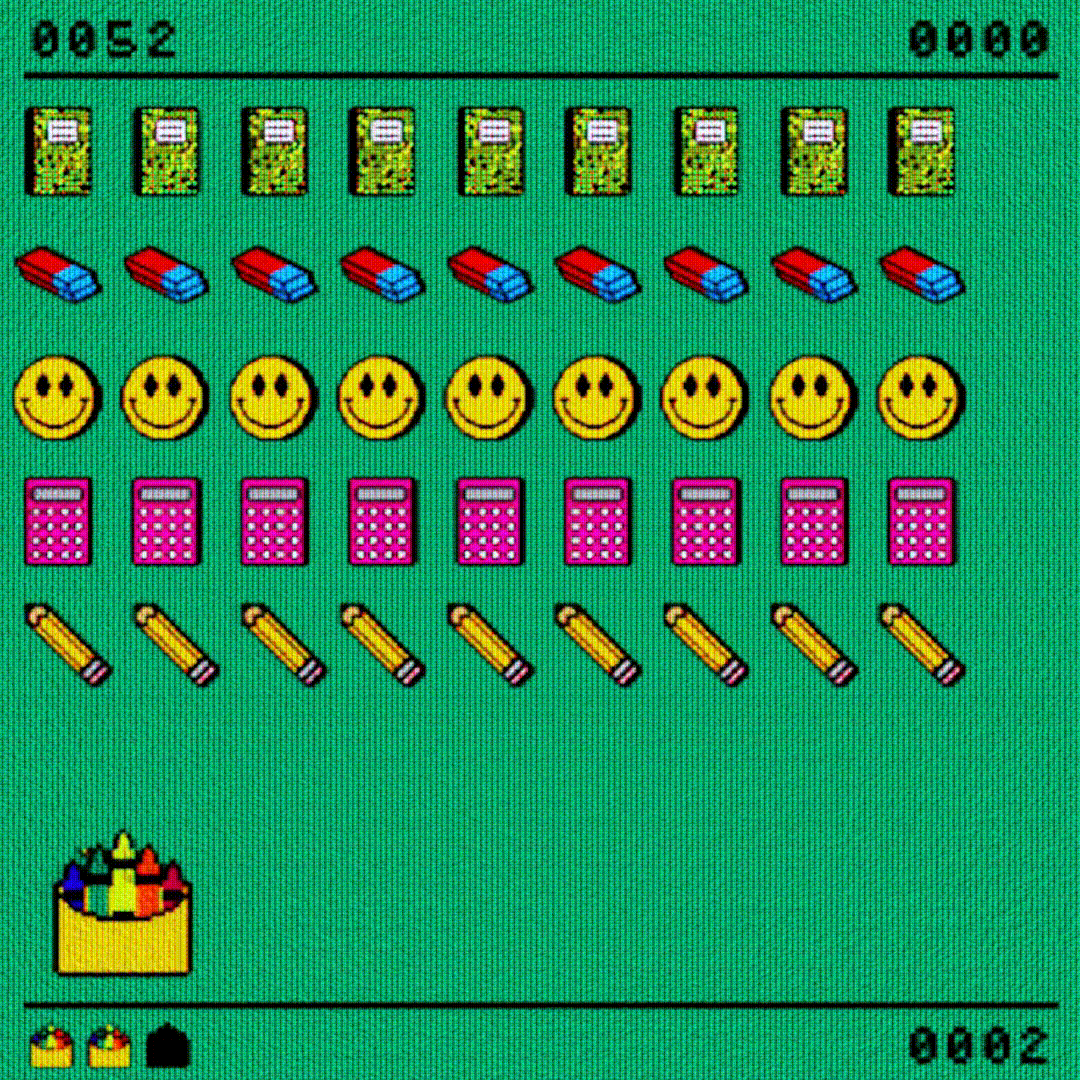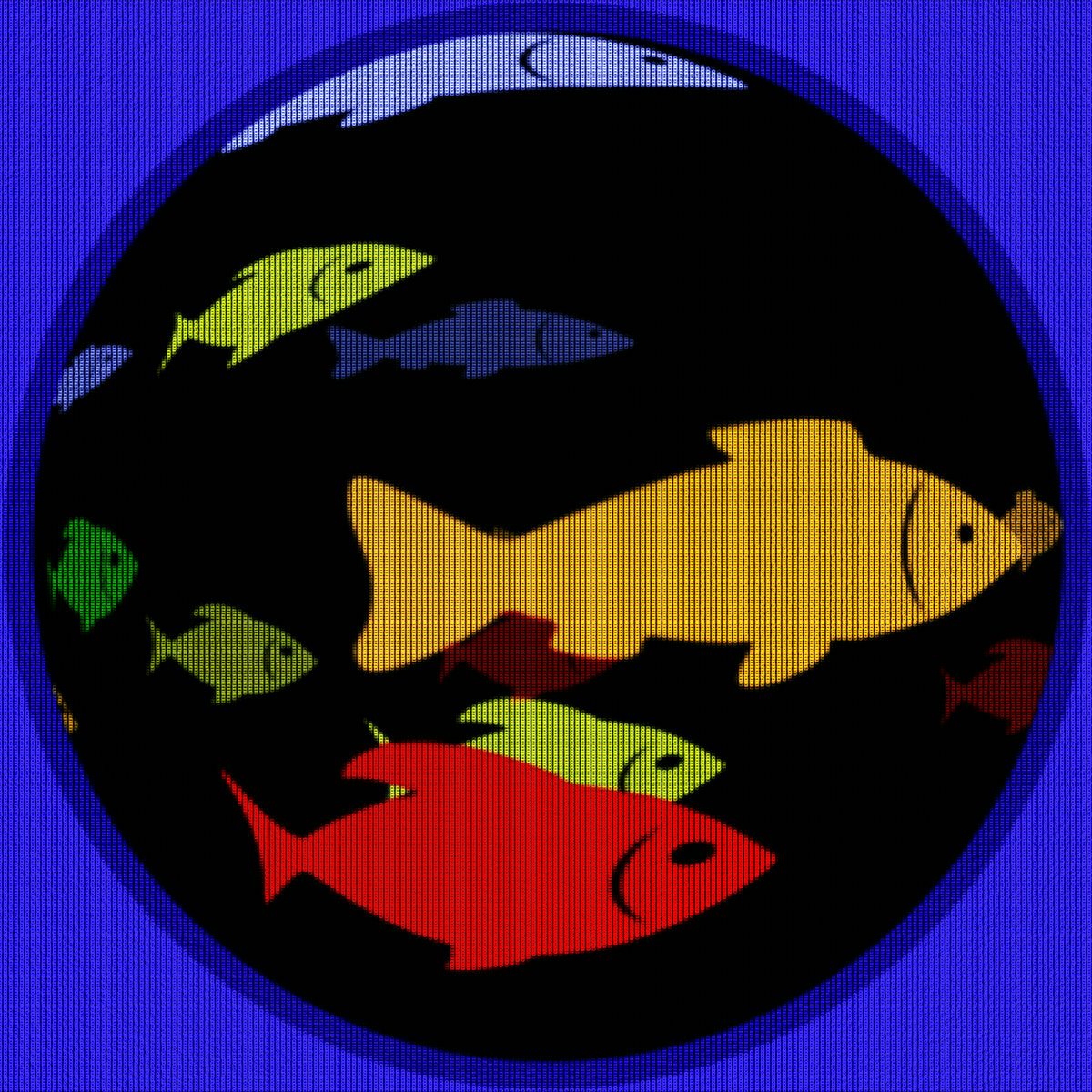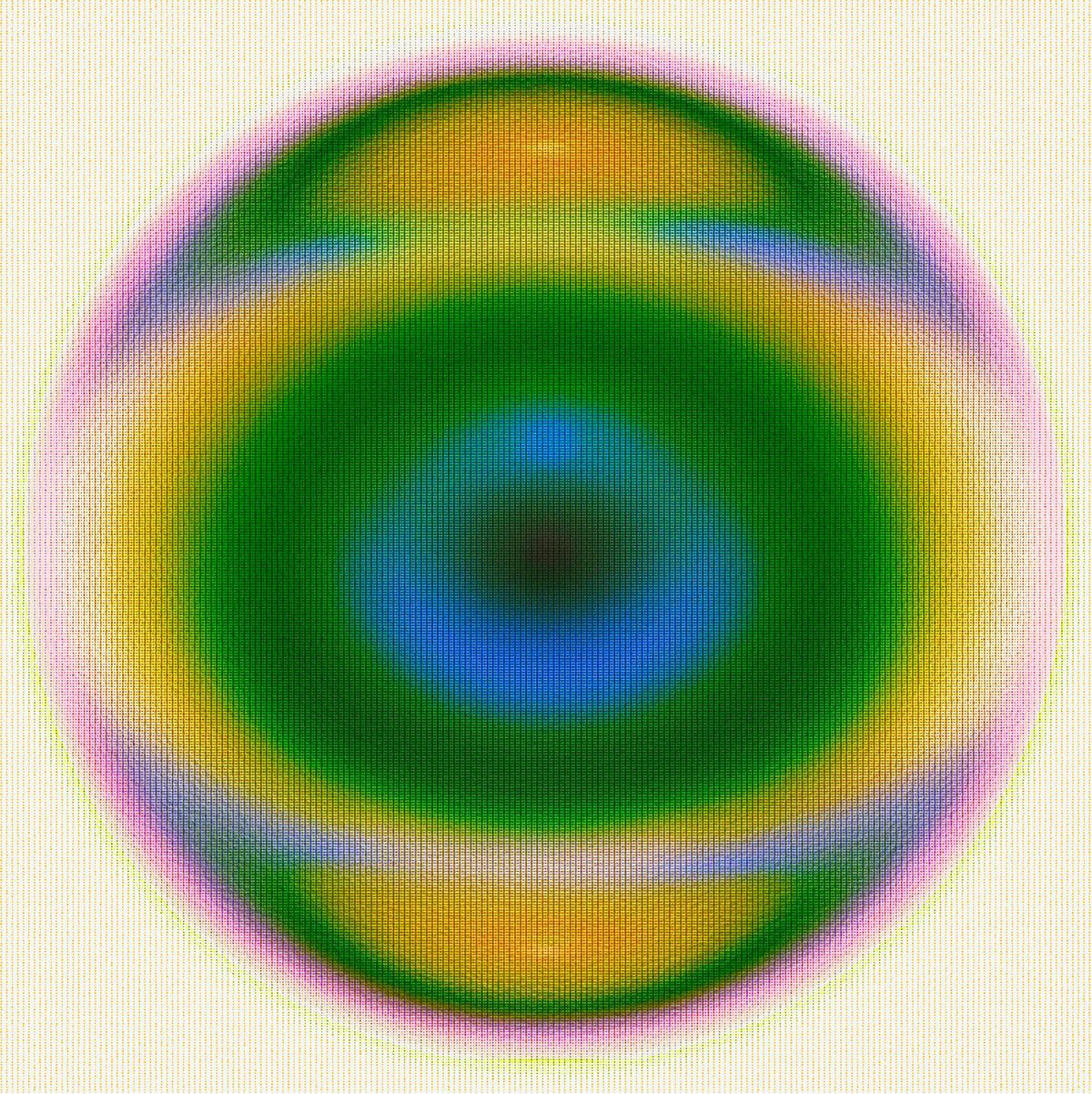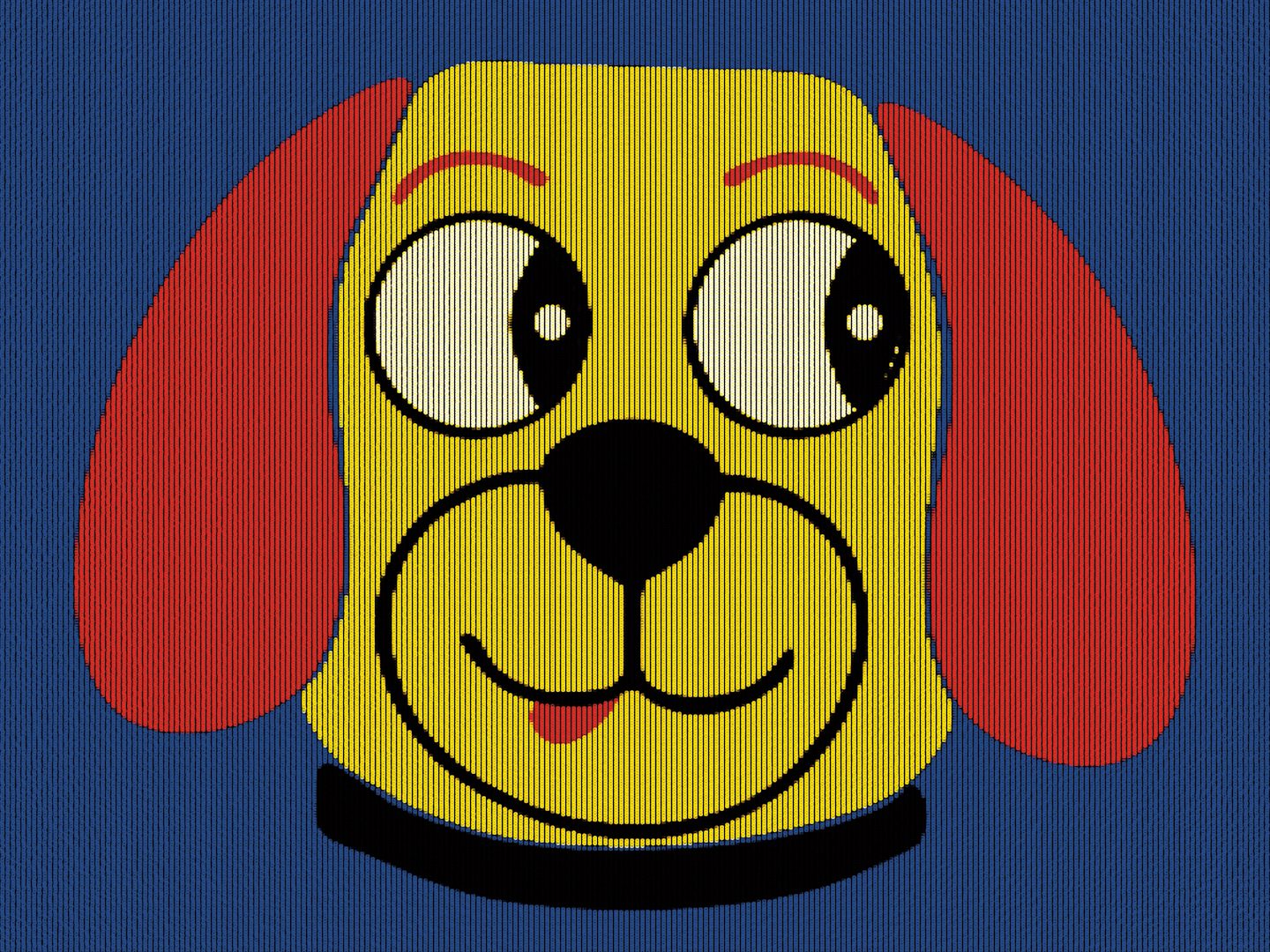Irene Suosalo on the joys of the creative journey
The video artist and illustrator is driven by her creative process, which combines new and old techniques. Here, she talks about the importance of working with other creatives
Irene Suosalo initially studied photography but felt the medium was too limiting for the ideas she had. Using her existing photographs, Suosalo began playing around with scanography to create more abstract images. Soon after, a friend suggested she try animating these abstractions and these formed the basis of her first animation gig, visuals for a techno club in Helsinki.
“I was really excited. It was something totally new for me,” says Suosalo, “and it wasn’t a conscious transition to video. I was really into techno clubs and partying, so when I was offered a VJ gig, things just started evolving organically.”
This progressed into Suosalo creating the posters for her sets, and then during the Covid lockdowns her passion for animation escalated as she took to making thousands and thousands of ideas and posting them to Instagram. During this time in 2020, Alexandra Zsigmond, art director at the New York Times, got in touch about an illustration commission, with the deadline being 24 hours later.

“I was so freaking happy when the email came in,” says Suosalo. “It just came out of the blue, but I was posting a lot on Instagram, so I think that’s where they found me. After that illustration, my career truly changed – it took my animations to a more professional level. Before that they were just random techno visuals with no other use. But it made me see the other possibilities in my work.”
Since then, work has continued rolling in for Suosalo, and as well as continuing to create illustrations and animated loops for the New York Times, her client list has grown to include the likes of Bottega Veneta, the New Yorker, Spotify, Wired, the Atlantic, and Dropbox.
Adopting an almost retro style, Suosalo is inspired by old technology, old arcade games, Finnish children’s animations, and paintings, and because of this there’s a layer of nostalgia to her illustrations. This often means that the briefs she’s sent for her editorial commissions focus on technology, computers or AI to create some contrast.

Her commissioned work has also allowed Suosalo to improve her skills, and she’s continued to self-teach in order to improve. “There’s more narrative to my illustrations, so even though I’m not the greatest at drawing, I’ve found a way to create more detailed images,” she says.
“I’ve built new skills and techniques, because I’ve had to learn how to animate things like water. Little by little, I’ve taught myself things that have now just become part of my process.”
Video art is also still a big part of Suosalo’s practice, and in this work she is able to be more abstract and ambiguous, working mostly with music and creating videos or pieces of animation. The key to keep things exciting for the creative is variety. “I’m interested in a lot of things, so the work I’m doing currently is perfect for me because it’s never boring.
“With the commissions there are very quick deadlines, which are sort of like stress tests or puzzles you only have a few days to solve,” explains Suosalo. “But then you have these longer-term artistic or music-based visual projects. With this work I’m able to try out new methods, take time experimenting, and spend weeks finding inspiration.”
The contrasts in the two types of work provide Suosalo with both freedom and discipline, but they also give her the opportunity for collaboration. Illustration, art, and video work are often solo ventures, especially now with remote working being the norm for many freelance creatives.
There’s working in different time zones and waiting for emails to come in, there’s research time, and then the hours it takes Suosalo to craft the work itself. However, she has learned to actively carve out pockets of time, where she works with creatives, ideates with art directors on editorial projects, and even performs with musicians.

One recent editorial project that allowed this was the Bloomberg Businessweek cover she created for a double issue in April this year. Her first US cover, the project involved Suosalo working with the magazine’s art director, Jordi Ng, to create an illustrated cover, plus images for the article itself and a set of animations for the website. The cover story was about a mysterious Croatian gambler who beat roulette.
“I worked with Jordi for a month or two; we started with the idea of the roulette wheel, which went hand in hand with my style as I love old board games,” explains the creative. “I then made an animation of the wheel, which also included some mathematical graphics, and that was reflected in the final cover.
We had hundreds of different sketches and narrowed them down bit by bit. Normally, I don’t have that much time to work on something.”

On the video art side, Suosalo has just returned from Copenhagen, where she debuted Oracle, a multimedia contemporary concert with percussionist Kalle Hakosalo, composer Lauri Supponen, and the Danish Ensemble choir. A four-year project, Suosalo created mood-shifting, glitchy visuals to sit alongside the music.
“This was the first time I’d worked with a contemporary composer and percussionist. It was different from other music collaborations because usually the music is finished and I just visualise it. But here we created the piece together,” explains Suosalo. “We started by sharing our methods and creative processes, and then the work just evolved over time.
“You can see the difference, though, as often there’s a specific story to tell in my commissions, but with the concert it was based on the rhythm of the music, the temperature, the tempo. My animations were very reactive to what was happening.”

This work gave her space to develop her creative process, but also work with others outside her field. “Even though I love to sit alone at my computer, there are times when it’s important I get out of the house and not live on someone else’s timetable,” she says.
Suosalo sees this human connection as vital in an industry that feels sometimes unnervingly precarious, with technologies like AI emerging and being used more prolifically to create images.
“I haven’t tried [AI] yet. I’m trying to avoid it as much as I can because I want to keep the roughness and imperfections in my style. It’s supposed to have a little awkwardness, and you can see it’s not the most technical or advanced animation. So I’m scared that if I start using it my style will evolve with AI in a way I wouldn’t want,” she explains.

For now, the artist’s biggest focus is on her first solo exhibition, which is happening in June 2024. Though still in its early stages, in preparation Suosalo has been interrogating her work a little more closely in terms of her process, themes and style. While she’s typically guided by briefs or inspired by the people she’s working with in regards to themes, ultimately the message behind most of Suosalo’s work is simply what can happen when the possibilities of what she’s able to create are stretched.
“I’m very material and visual. I have big catalogues of inspiration and ideas, and I just love making images,” she reflects. “When you have time for the process it can take you anywhere, and then you often get somewhere very different to where you were planning – that is the most interesting part for me.”




